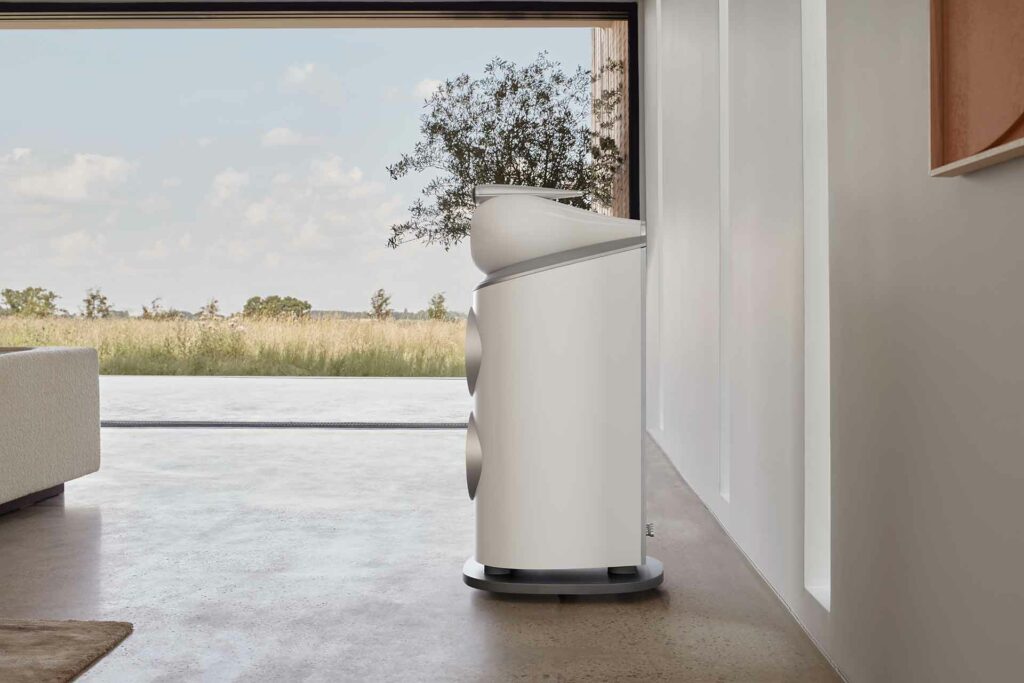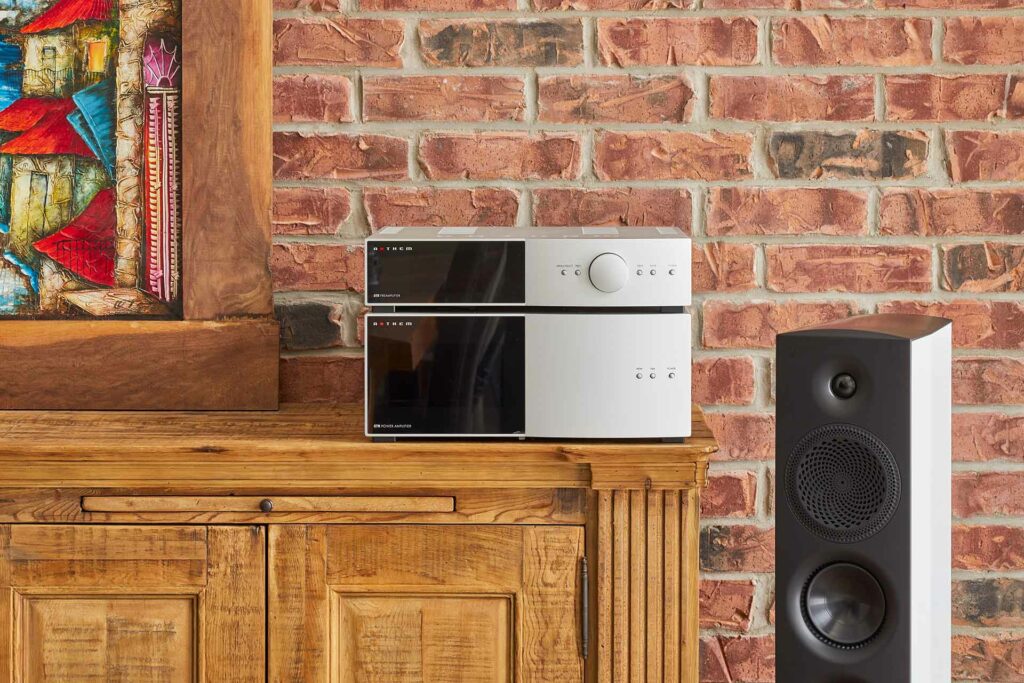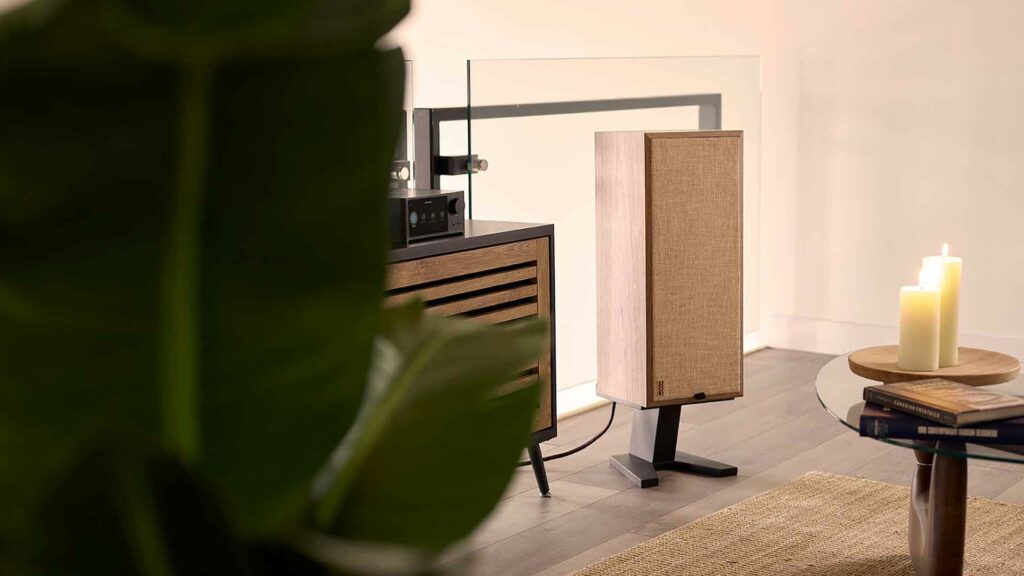Two weeks ago, I was on the phone with a public relations executive I hadn’t spoken with in a few years. Frank currently represents PS Audio, Audio-Technica and a few other audiophile brands and he was confirming that he had sent the exciting PS Audio Sprout integrated amp to reviewer Andrew Dewhirst in Canada, but he also had Bob Barrett’s new PS Audio Power Plant product (Bob has an older one which is good for comparison sake) as well as a very promising PS Audio amp that is well under $2,000 but looks like it has a lot of potential.
Frank said to me enthusiastically, “the amp has a good 100 hours on it,” to which I paused to think and then responded: “Is that a thing…?”
The question led us both into a bit of conversation about whether break-in was of any importance in the audiophile world and wow did we go off in a bunch of directions. Once I hung up with Frank, I sent out a few emails to electronics engineers and speaker designers of significance throughout the industry. The responses that I got were pretty enlightening on the topic of audio product break-in.

Why Is Break-in an Important Concept in the Audiophile Hobby? Ask a Retailer…
When I worked in audiophile retail, we would encourage clients to spend a bunch of time letting components come up to temperature but mainly to become more familiar sounding. For many people, anything new can elicit an immediate feeling of “this isn’t good,” and for a hobby like audiophilia – which is notably poor at embracing new things – this is can be a major issue.
Some of the insanely pricey Cello amps that I sold back in the mid-1900s ($50,000 a pair monoblocks, for example)seemed subjectively to benefit to letting the amp come up to temperature. A few top electronics designers that I posed my question to also suggested that tube and even more traditional Class AB amps might benefit a little bit from giving your audio engine a few blocks from your garage before you start red-lining your sports car. But can you hear or measure the difference between an amp at ice-cold startup versus 10 minutes? It would be tricky to A/B without two of the same amps, but I doubt there’s a night and day difference if we sat down to do such a test. Harman tested this in their Northridge, California labs and found that there was nearly no difference in terms of measurements or subjective results. It seems as if it is more polite than necessary to give your system a little warm-up before you start laying into it for some big-level outputs. Additionally, in evaluating a pair of headphones from a competing company that recommends 150 hours of break-in, Harman measured literally no difference from hour one to 150, neither objectively nor subjectively.
Familiarity with a consumer electronics product often gets you accustomed to its quirks. That’s just human nature, and something that professional reviewers all factor into their evaluations. For example, I just traveled with a pair of very premium wireless headphones that didn’t sound as good as the Focal Bathy headphones that I had reviewed before, or the Mark Levinson No. 5909 headphones (read the review) that were in-line for review after this other pair. After a few hours of fussing with the new headphones and traveling across the country by air, these new headphones sounded a little more comfortable and predictable. The technical measurements that I’ve recently had done on both pairs suggest that the pair that I traveled with were down by close to 18 dB in terms of sub-100-Hz performance versus the Mark Levinson No. 5909 headphones, but over time, I had become accustomed to the diminished bass output. Of course, I went back to listen to the Focal Bathys and Mark Levinson No. 5909s to get perspective on the overall category before did my final review of these other headphones.
When it comes to audiophile power amps, most reviewers don’t have a bunch of them just sitting around to swap in and out for the sake of reference. For me, I tend to stick with the same amp as a constant in my reviews unless I am specifically evaluating other amps.

So, Do Audiophile Amplifiers Need to Break In?
The short answer is no.
When you ask some of the best amp designers in the world, they told me that the capacitors in most amps charge up in mere seconds. It would be generous of you to give an audiophile amplifier the chance to come up to operational temperature, but none would say just how important that is to your overall listening experience, which leads me to believe that it is a small improvement, if audible at all.
So, other than potential differences in sound that haven’t been verified in controlled listening, what else could change inside of an amp over 100 hours that doesn’t happen in the first? Not a whole lot, it seems, upon more careful consideration. Some notable amp designers told me to never worry about breaking in an amp or most electronic components, as that is just audiophile voodoo designed to avoid reactionary audiophile retail returns.
Just as I wouldn’t redline my Mercedes on my street just after pulling out of the garage, though, I wouldn’t likely hammer my new Pass Labs XA25 Class A power amp within seconds of turning it on. I will show my system (and perhaps my ears) a little respect in the first few minutes of listening. With that said, you won’t see me go out buying upgraded AC power cords or audiophile interconnect “burners,” because that’s not a thing, even though there are companies who will try to sell them to you. Beware of these snake-oil salesman. They also sell thousands of dollars of Mpingo discs, CD Stoplight pens, as well as those little sawhorses that you can “decouple” your speaker cables from the floor and its high noise floor. I wish I was making this stuff up but, sadly, I am not.
Is Speaker Break-In More Legit?
Speakers, of course, are not electronics. They are transducers, and the surrounds of a traditional dynamic speaker driver are normally made of some sort of rubber-like material and can come nice and taught from the manufacturer. Does it help do run a few hours of signal through your speakers to loosen them up and get them ready to play? It depends on who you ask, and I asked a lot of very knowledgeable people both on and off the record.
One ex-Harman speaker executive suggested that speaker break-in is absolutely not a factor in a well-designed dynamic speaker. This has been confirmed in measurements and listening panels. The net/net of things is that good speakers are going to sound good out of the box with or without break-in. Placement, acoustical treatments, moving furniture around – all of these factors can make really significant sonic differences. A far greater differences than any amount of break-in. Running Dark Side of the Moon (or even sweeping test tones) at a modest 40 dB for a few spins through your new transducers is likely not going to change much that you can hear or measure.
One of the best speaker marketers in the business, who owns many exotic speakers from brands that he didn’t design/market or own, suggests that in his experience that some speakers benefit from a dozen hours of break-in or so. He owned companies that sold some of the most successful dynamic speakers in audiophile history. Beyond his professional endeavors, his personal audiophile passion is for electrostatic and planar speakers and he likes them to have many hours on them before critically listening. I guess there is no harm to that, assuming that you have the time and willingness, but it shouldn’t be considered mandatory like when Ferrari tells you not to red-line your new prancing horse for the first 1,000 miles. I tend to listen to the Ferrari head tech more carefully than audiophiles for some reason.
A dear friend and former reviewer of mine has an exotic pair of planar speakers currently in for review for the publication he works for now. They have the large form factor of say Magnepans as they are almost eight feet tall. He didn’t like them at all when he first listened to them. He likes them better now. Is that because, like me with the headphones, that he is more comfortable with their sound, or is it that they broke-in? I am not sure there is a scientific answer.

Brass Tacks: Should You Worry About Break-in with Your Audiophile Speakers or Electronics?
The short answer is no.
You have enough to worry about elsewhere in your life. Audio is supposed to make you happy, not more anxious, insecure, and neurotic, no matter what the print magazines clinging to life would have you believe. Understand that every component tends to have its own sound and listening experience, and that is a very cool part of the audiophile journey. Even if you are testing a component from, say, Crutchfield, or you borrowed an amp from a local audiophile dealer, in a reasonably short period of time, you will have that component working at its best. Getting it really sing in your room is a whole other challenge, but you don’t need two weeks of running white noise to get there.
Enjoy your audio every time you sit down to your system. Enjoy the upgrade process, as the audiophile journey is a key part of the fun of the hobby. Upgrades come with a buzz. Embrace that without worry. This hobby is all about having fun and making your life better. You don’t need to impress anybody or follow outdated rules and/or antiquated traditions.
Where do you stand on break-in for audiophile components? We’d love to hear from you in the moderated comments below?




Great article Jerry,
I have had many a loudspeaker driver on my bench through the years and the one thing I found with break-in is the driver parameters that do change, are often in relationship with each other. It ends up netting zero, or too little to matter once in cabinet and in room.
One comment I would make, especially as it relates to new electronics. I prefer the method whereby I stop listening to my system for a few days and maybe a week prior to inserting the new gear…that way, I’m less likely to remember exactly what it sounds like. Then, I like to listen to the new piece for at least 4-5 days before I put the original gear back in place. Only then am I willing to do some direct comparisons on specific songs between the two pieces.
Two things I’ve learned using this method are that I usually don’t automatically dislike the new gear and I’m much more able to discern and then appreciate the differences and in the end, whether I prefer the newer piece or not, I almost always find things about it that I value.
A few members of the AV press core were talking about this in San Diego at a Masimo (used to be called Sound United) Consumer event this week.
Every day, you hear differently. You might have a slight cold or allergies and that can be huge.
Even over a few minutes, you can easily forget what you heard 5 min before. That’s why when we were A-B testing – we all SHUT UP and let the switch happen without saying anything OR delay.
PS: Thanks for the comments. We had an issue for about a day with the plug-in. It looks fixed now – thank God!!! Enjoy the site. Post more comments when you like.Jerry
I find it interesting that you believe cable elevators do not work. I demoed Shunyata for years, and without telling people what to listen fo,r the results were virtyally identical. Using the devices ON CARPET made a repeatable, audible difference.
I’d like to see some Audio Advice in-store measurements on that one.
Going off on tangents is part of the fun of being an audiophile.
I think warm-up and break in is beneficial. Interesting that the Harman engineers, who I respect greatly, have measured no differences. I’ve never done any measurements on my current system and can’t prove a thing, but I think it sounds better after it’s been on for about an hour.
Here’s a question: if you think something sounds better, and it really doesn’t, does it really matter if you’re enjoying it more?
My system sounds better when I’m in a good mood.
Hi Frank, this is a great observation. I always said if someone thinks putting thick-cut hard salami on top of their turntable made it sound better, as long as they are enjoying the music it doesn’t matter. Yogi Berra said it best: 90% of the game is 1/2 mental. That is why a clean listening space sounds better, and the finer the look of the loudspeaker, the better it sounds to an untrained ear.
You said “salami”
Better late than never… while I don’t know whether or not break-in is important, I prefer to err on the side of caution and do break-in speakers.
Ultimately I figure I’m not hurting anything, so why not?
Just because you don’t know what to measure for doesn’t mean break-in is not a factor. Use your ears and you may just find break-in for electronics, speakers, and cables can make an audible difference in sound quality.